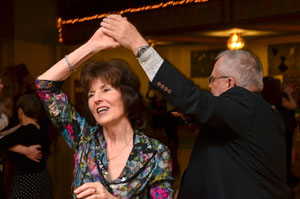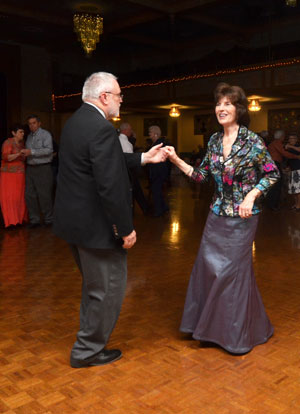Can Exercise Change the Brain?
Treating Parkinson's Disease with Physical Activity
By Lisa Marshall
 (
(
“There is no question in my mind that I have slowed the progression of my disease through exercise,” says Riffle, who was diagnosed in 2006, promptly enrolled in a Parkinson’s-specific exercise trial at University of Colorado School of Medicine and has been active ever since.
In fact, according to a growing body of research by CU Professor Margaret Schenkman,
During the past 25 years, Schenkman has published dozens of articles related to exercise and Parkinson’s disease. Her studies, and those of
“We know we can improve physical function with exercise,” says
Parkinson’s affects roughly 1 percent of people older than
As recently as 30 years ago, neurologists believed that exercise could worsen symptoms. Schenkman was among the first to document that it helped rather than harmed and has since been instrumental in developing Parkinson’s disease-specific exercise protocols and conducting research to determine which kinds of exercise—aerobic, strength, balance, flexibility—are best for which individuals. But the idea of exercise as treatment has been slow to catch on universally. Today, some neurologists recommend it routinely to Parkinson’s patients; others don’t.
“For a long
 Comella points to rodent studies showing that exercise boosts expression of proteins called neurotrophic factors, which are believed to protect dopamine-producing cells in the substantia nigra. Other animal studies suggest that exercise prompts
Comella points to rodent studies showing that exercise boosts expression of proteins called neurotrophic factors, which are believed to protect dopamine-producing cells in the substantia nigra. Other animal studies suggest that exercise prompts
But does exercise slow brain degeneration in people with Parkinson’s disease? To find out, Schenkman would like to use neuroimaging approaches to see whether the brains of people who exercise differ from those who don’t. Before embarking on such an expensive trial, she must first determine what “dose” of exercise is appropriate.
This winter, Schenkman
Investigators will recruit 126 people recently diagnosed with Parkinson’s disease who are not yet taking medication and divide them into three groups: one that exercises moderately, one that exercises vigorously and a control group that does not exercise for the first six months, followed by
“It is cutting-edge research that could lead to changes in how we practice,” says
The research team includes Wendy Kohrt, PhD; Benzi Kluger, MD; and Brian Berman, MD, all from the School of Medicine; as well as Comella from Rush; Anthony Delitto, PhD, PT, from the University of Pittsburgh; and Daniel Corcos, PhD, from the University of Illinois at Chicago, who is co-leader of the project.
Schenkman notes that while medication can alleviate Parkinson’s symptoms for the first five years, “they become a mixed blessing” as patients begin to develop side effects, such as repetitive and involuntary movements, and hallucinations.
“The best thing is to not start medication before one needs to,” she says. “If exercise can delay the need to start drugs, or reduce the dose needed, that would be tremendous.”